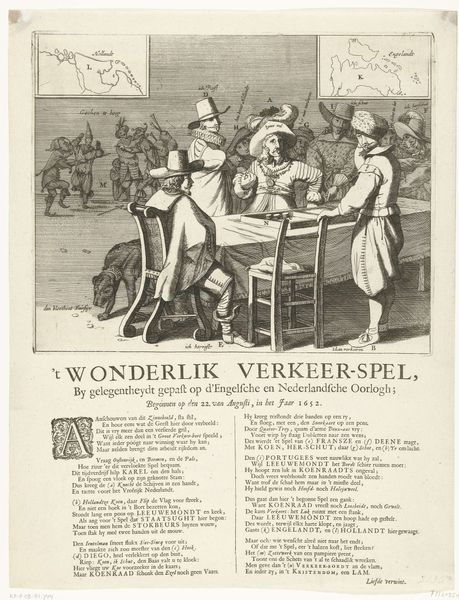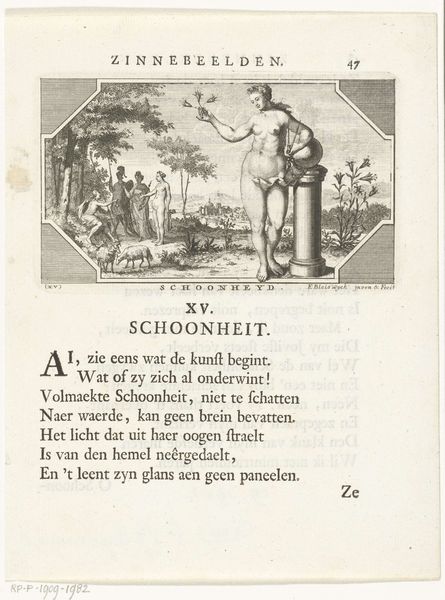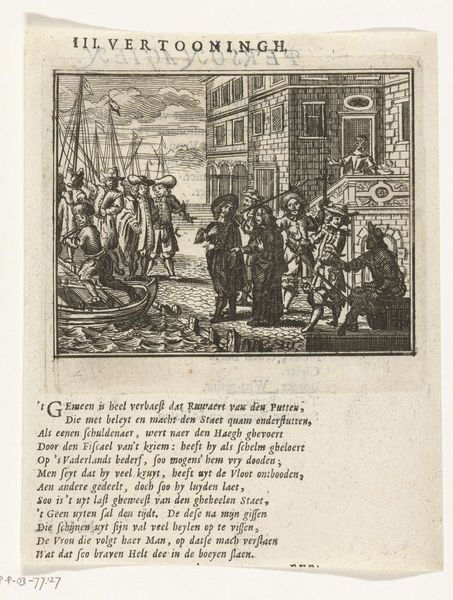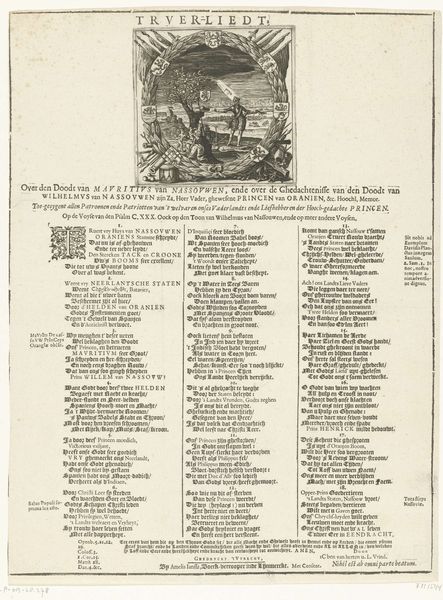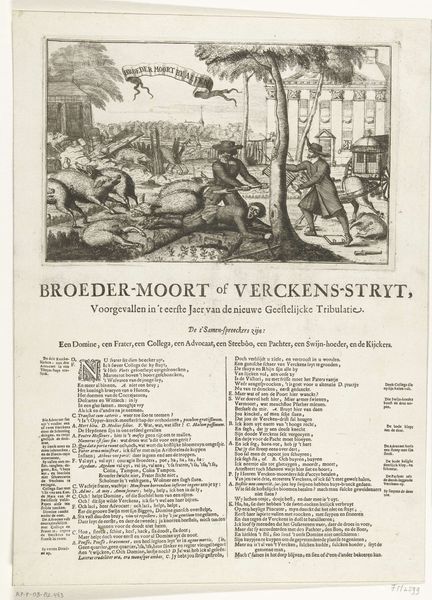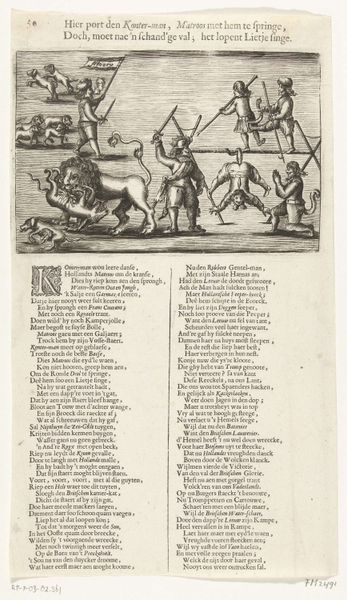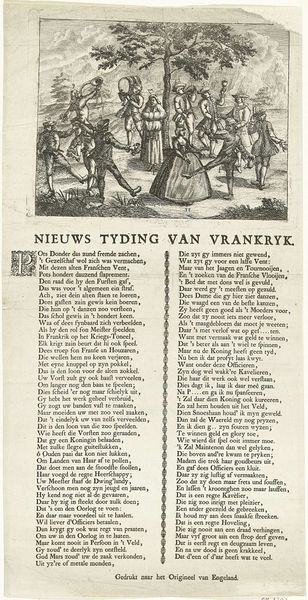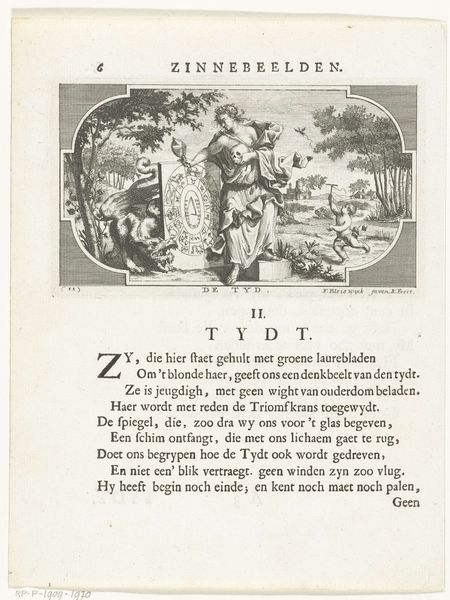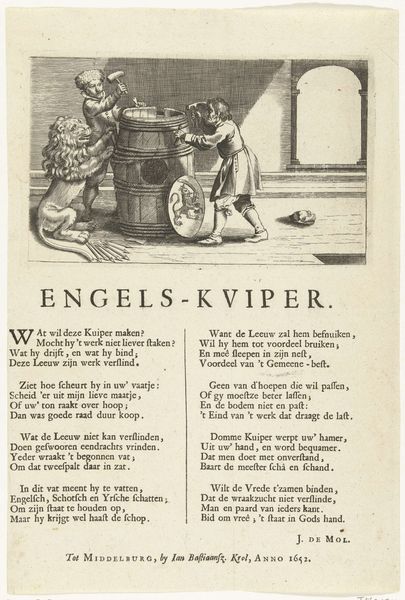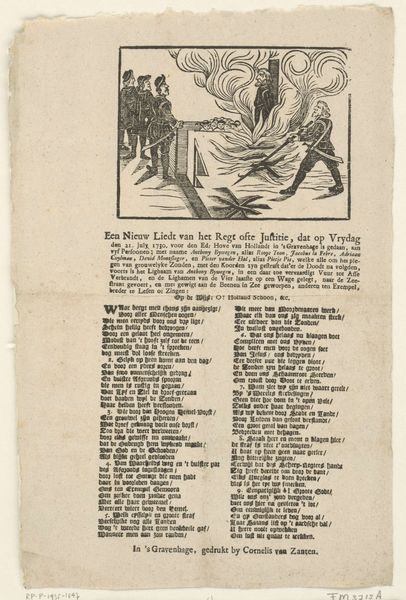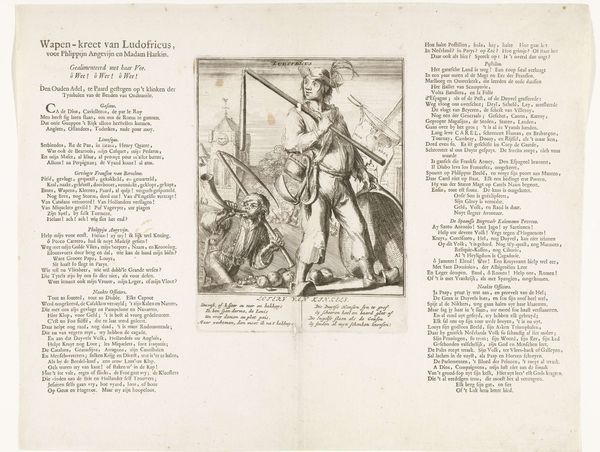
Spotprent en lied op de onenigheid tussen Willem III en de stad Amsterdam, 1690 1690
0:00
0:00
graphic-art, print, engraving
#
pen and ink
#
portrait
#
graphic-art
#
baroque
# print
#
old engraving style
#
line
#
cityscape
#
history-painting
#
engraving
Dimensions: height 370 mm, width 255 mm
Copyright: Rijks Museum: Open Domain
This print and song sheet, made by Romeyn de Hooghe around 1690, captures the discord between William III and Amsterdam. But beneath the surface, it tells us much more about the politics of imagery in the Dutch Golden Age. The image creates meaning through visual codes. For example, the caricatured figures and symbolic objects point to specific political figures and their policies. Made during a time of intense political maneuvering, this print reflects the complex relationship between the Dutch Republic and its ruling House of Orange. Looking closer, we can see how this artwork comments on the social structures of its time. Amsterdam, a powerful merchant city, often clashed with the more aristocratic and monarchical aspirations of the House of Orange. De Hooghe's print, therefore, is not just a record of a specific conflict, but also a commentary on the broader tensions between different social classes and political factions. To truly understand this artwork, we need to consult historical documents, political pamphlets, and other visual sources from the period. Only then can we fully appreciate the social and institutional context in which it was created.
Comments
No comments
Be the first to comment and join the conversation on the ultimate creative platform.
